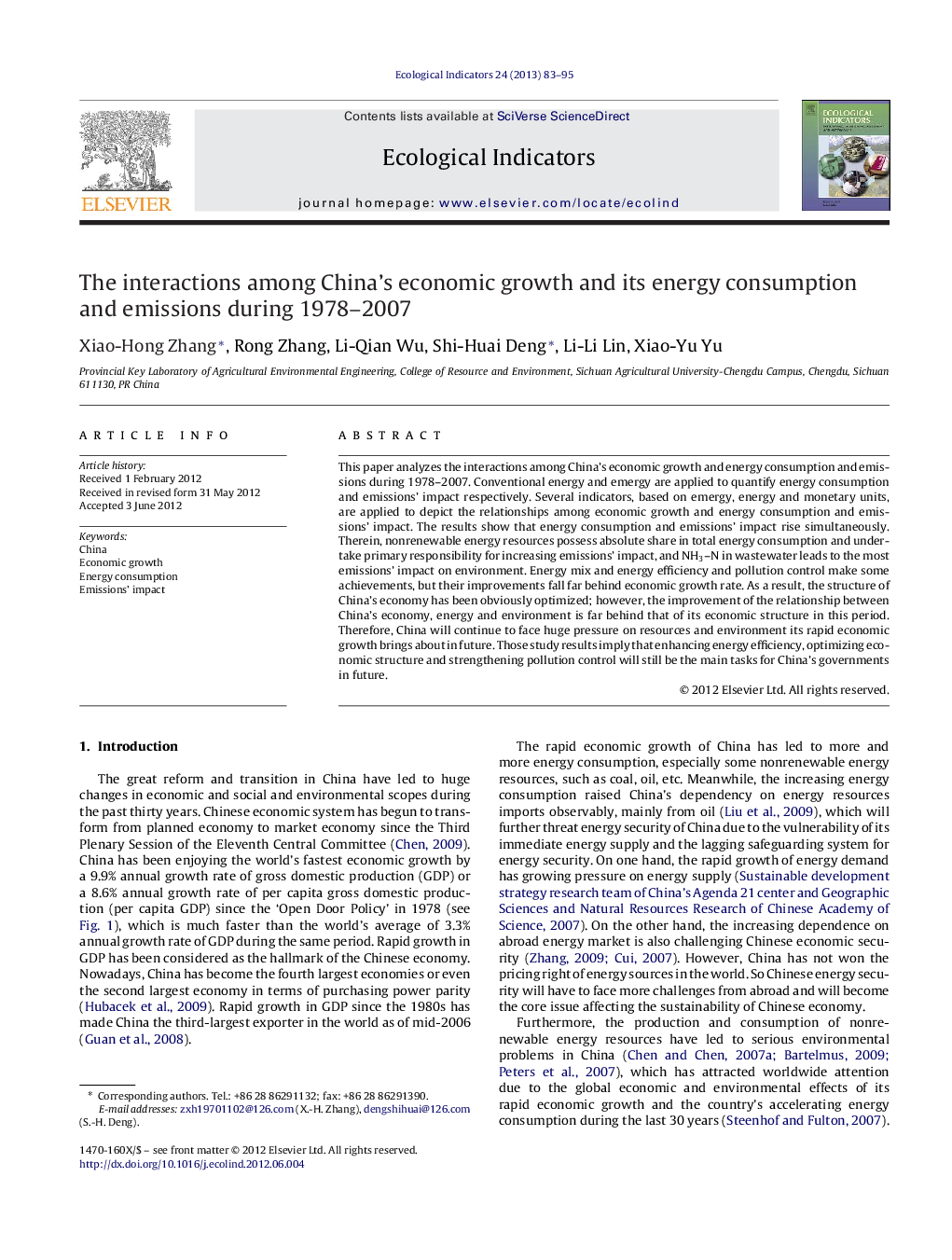| Article ID | Journal | Published Year | Pages | File Type |
|---|---|---|---|---|
| 4373624 | Ecological Indicators | 2013 | 13 Pages |
This paper analyzes the interactions among China's economic growth and energy consumption and emissions during 1978–2007. Conventional energy and emergy are applied to quantify energy consumption and emissions’ impact respectively. Several indicators, based on emergy, energy and monetary units, are applied to depict the relationships among economic growth and energy consumption and emissions’ impact. The results show that energy consumption and emissions’ impact rise simultaneously. Therein, nonrenewable energy resources possess absolute share in total energy consumption and undertake primary responsibility for increasing emissions’ impact, and NH3–N in wastewater leads to the most emissions’ impact on environment. Energy mix and energy efficiency and pollution control make some achievements, but their improvements fall far behind economic growth rate. As a result, the structure of China's economy has been obviously optimized; however, the improvement of the relationship between China's economy, energy and environment is far behind that of its economic structure in this period. Therefore, China will continue to face huge pressure on resources and environment its rapid economic growth brings about in future. Those study results imply that enhancing energy efficiency, optimizing economic structure and strengthening pollution control will still be the main tasks for China's governments in future.
We adopted several indicators to evaluate the interactions among Chinese economy, energy consumption and emissions’ impact during 1978–2007. ► China has made obvious achievements in economic reconstruction. ► The improvement of economic structure has not reduced energy consumption and emissions’ impact. ► The related countermeasures need to be taken or strengthen in future.
